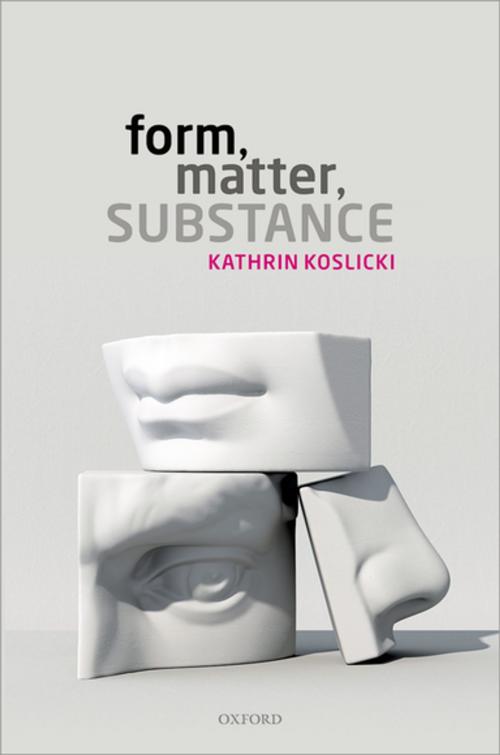Form, Matter, Substance
Nonfiction, Religion & Spirituality, Philosophy, Metaphysics, Reference & Language, Language Arts| Author: | Kathrin Koslicki | ISBN: | 9780192557094 |
| Publisher: | OUP Oxford | Publication: | August 23, 2018 |
| Imprint: | OUP Oxford | Language: | English |
| Author: | Kathrin Koslicki |
| ISBN: | 9780192557094 |
| Publisher: | OUP Oxford |
| Publication: | August 23, 2018 |
| Imprint: | OUP Oxford |
| Language: | English |
In Form, Matter, Substance, Kathrin Koslicki develops a contemporary defense of the Aristotelian doctrine of hylomorphism. According to this approach, objects are compounds of matter (hule) and form (morphe or eidos) and a living organism is not exhausted by the body, cells, organs, tissue and the like that compose it. Koslicki argues that a hylomorphic analysis of concrete particular objects is well equipped to compete with alternative approaches when measured against a wide range of criteria of success. However, a plausible application of the doctrine of hylomorphism to the special case of concrete particular objects hinges on how hylomorphists conceive of the matter composing a concrete particular object, its form, and the hylomorphic relations which hold between a matter-form compound, its matter and its form. Koslicki offers detailed answers these questions surrounding a hylomorphic approach to the metaphysics of concrete particular objects. As a result, matter-form compounds emerge as occupying the privileged ontological status traditionally associated with substances due to their high degree of unity.
In Form, Matter, Substance, Kathrin Koslicki develops a contemporary defense of the Aristotelian doctrine of hylomorphism. According to this approach, objects are compounds of matter (hule) and form (morphe or eidos) and a living organism is not exhausted by the body, cells, organs, tissue and the like that compose it. Koslicki argues that a hylomorphic analysis of concrete particular objects is well equipped to compete with alternative approaches when measured against a wide range of criteria of success. However, a plausible application of the doctrine of hylomorphism to the special case of concrete particular objects hinges on how hylomorphists conceive of the matter composing a concrete particular object, its form, and the hylomorphic relations which hold between a matter-form compound, its matter and its form. Koslicki offers detailed answers these questions surrounding a hylomorphic approach to the metaphysics of concrete particular objects. As a result, matter-form compounds emerge as occupying the privileged ontological status traditionally associated with substances due to their high degree of unity.















